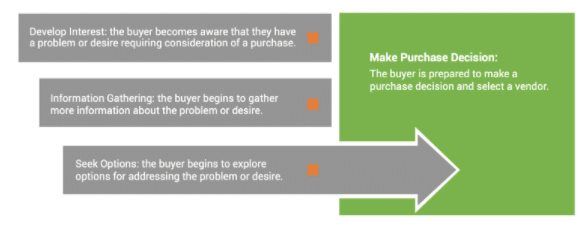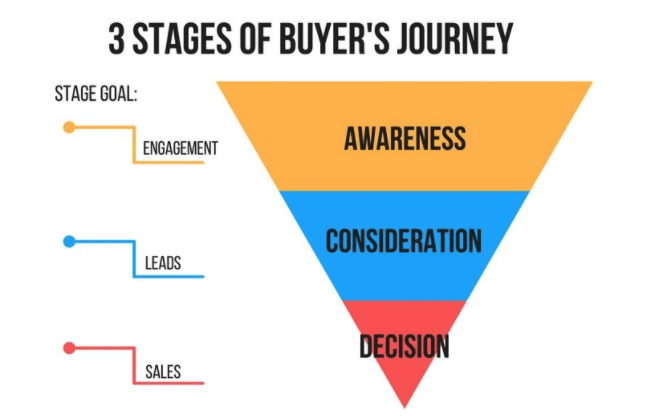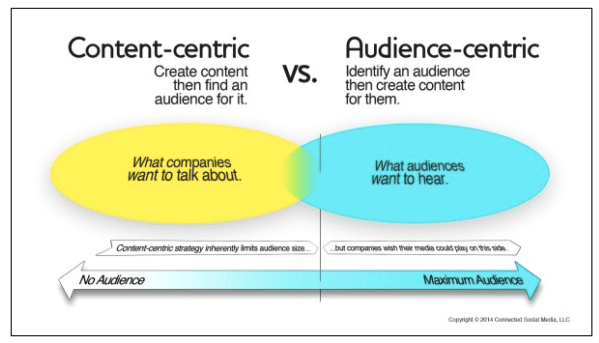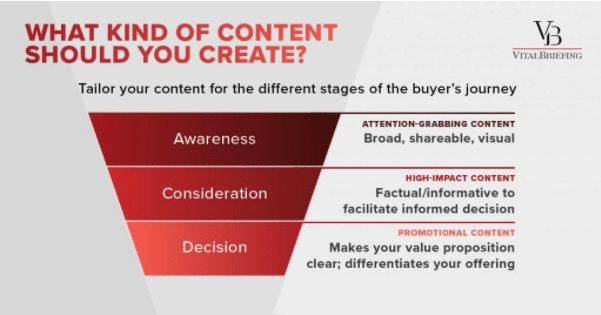Creating compelling content that generates leads and sales is vital at every stage of the buyer journey. Digitally transforming your business with the latest technology, such as using a VoIP phone service or sales enablement solution, can set you on the path to excellence in customer service. However, don’t underestimate the importance of good content’s role in engaging customers in the first place.
The aim of any organization’s content strategy should be to connect with its audience at every stage of the buyer journey. This will result in business success. With buyers in the B2B sphere consuming an average of 13 pieces of content before purchase, volume matters. But, so does crafting the right copy and images, and delivering them in the right format.
Regularly reviewing content may feel like just another one of the website maintenance tasks your team has to carry out. However, this is a task you can’t afford to ignore. So, just exactly how do you create content which has the desired effect? Below we will explain the buyer journey and provide our top tips for turning ordinary sales content into extraordinary sales experiences.
What is the buyer journey?
When anyone buys a product or service, there is predominantly a research and decision-making process behind it. In terms of buyer experience, contact with a business selling products can roughly be broken down into three widely accepted stages.
This is known as the buyer journey. It’s where prospects transition from being uninformed to becoming conscious buyers.

What are the stages of the buyer journey called?
The awareness stage
This is the stage where the prospect first realizes that they have a need or a problem that requires solving. They probably share demographics with your ideal customer, also known as your ideal customer profile (ICP) or buyer persona. Businesses need to engage prospects at this point.
The consideration stage
At this stage, the prospect has already recognized their need or problem and is weighing up the best method of dealing with it. They have now become a lead.
The decision or purchase stage
The decision stage, also known as the purchase stage, is where the prospect becomes ready to buy. They just need to discover how to become your customer. It’s time to show what your business can offer with more direct content and close that sale.

So how do you create compelling content for those three stages? By following these eight tips, that’s how.
1. Understand your buyer personas and map their journeys
It’s really important to understand your multiple buyer personas, or ideal customers, and map their journeys out. When planning your content marketing strategy, you will discover that your business should be creating content for each of your buyer personas.
If you don’t really understand who your buyer personas are, there is a danger that you could be creating the wrong content. This could result in your prospects or leads going elsewhere.
2. Build a marketing funnel that’s relevant to your industry
A marketing or sales funnel is a mechanism for describing the stages a customer goes through before a purchase takes place. Customers at the wider top of the funnel are further away from making a purchase. The narrower end of the funnel contains customers who are much further along the buyer journey.
No two businesses are the same. Businesses all have a unique marketing funnel designed around their individual buyer journey, which is specific to their industry sector, business model, product or service, and pricing. This can help you build upon your buyer journey and create a greater understanding of what sort of content to create in order to attract strangers, engage leads, and provide a great customer experience.
Your business marketing efforts often attract buyer personas at the top of the funnel. When they transition into qualified leads, it’s time for your sales team to shine. Your customer success department will then get a chance to impress as things progress.
3. Analyze audience behavior
Buyer persona research is extremely important, as audiences vary massively depending on the industry sector your business operates in. Understanding how prospects evaluate products and services is key to providing just the right content to encourage conversion.
Using a robust sales enablement solution with content hub and insights capabilities to manage, share, and present content throughout the sales process allows sellers and marketers to track content usage and engagement (e.g. how long buyers looked at a specific page in a brochure and if they shared a piece of content with other stakeholders) and directly tie specific content assets to revenue. Establishing a clearer and more realistic picture of how your audience engages with your content and whether or not it helps your sellers close deals ensures you can create more engaging and compelling content.
4. Produce audience-centric content
Once you understand who your audience is, the next step is to put them at the very heart of your content producing efforts. A common mistake that businesses make is creating sales content around what they want to say, rather than what customers are interested in learning.
Becoming audience-centric is by far the best way forward. Keyword research can really help here by uncovering the kind of content your target audience is searching for online. It is vital that there isn’t a discrepancy between your content marketing strategy and your audience’s needs.

5. Understand your buyer’s challenges and pain points
Pain points are specific problems that your prospective buyers encounter, which can be solved by your business service or product. For example, your buyer may need a product in a hurry and find a slow lead time very frustrating.
If you can provide the product quicker than your competitors, and advertise this via your content at the appropriate time in the buyer journey, you should be able to win the sale. Adopting a content methodology like CLOSE™ can help you ensure you’re always speaking to buyer challenges rather than product features and functionality.
6. Provide your prospects with the right content at the right time
Be aware that not every piece of content can be created for the sole purpose of lead generation. Buyers are increasingly expecting a personalized and seamless experience. This includes consuming the appropriate content at any given point in the buyer journey.

Content for the awareness stage
Content for this stage should start conversations. It should be informative, answer frequently asked questions, and solve problems. Examples include blog articles, social media marketing, helpful ‘how-to’ videos, and informative pages to aid search engine marketing. Online video calling or conferencing technology can also facilitate educational webinars.
Content for the consideration stage
This stage is all about building meaningful relationships. Content based around the consideration stage should help explain available products and solutions. Asynchronous communication methods, such as email marketing, are ideal for this stage of the buyer journey. This is because they let the prospect consider your solution to their problem in their own time.
Other good options for weighing up pros and cons include:
- ROI Calculators and TCO Comparisons
- Case studies
- Free samples
- Reports
Content for the decision stage
Interactive content delivery methods such as product demonstrations, chatbots/live chat, and self-service calculators or assessments are ideal for the decision stage of the customer journey. Free trials or coupons can also help to incentivize a prospective buyer.
7. Pay attention to your competitors
Keeping up with the competition can really pay dividends here. Competitor monitoring can help you look at content marketing examples from your competitors and see how you measure up. For example, you can track public responses to content such as social media campaigns and blog posts.
You could also subscribe to your competitors’ channels to keep a closer eye on how they are performing. Think about what they are doing that you aren’t. Are you missing out at any stage of the buyer journey?
8. Teamwork makes the dream work
When it comes to technology, you could have one of the best call centers and a highly advanced VoIP phone system and a next-generation sales application, but don’t forget the human touch. Your biggest asset when creating compelling content is your team and their knowledge and creativity. How can this be optimized?
Investing in the right training or knowing when to outsource to an agency or freelancer is vital when it comes to content. Simply having a love of writing or spending lots of time using personal social media is no substitute for a thorough understanding of how to create SEO optimized, well researched, high-quality content. It’s also vital to know how to reach the right people at the right time.
Creating timely and useful content will influence purchase decisions
Impactful sales content which is authoritative and useful, and that connects with buyers at just the right time is one of the most effective drivers of business success. With audiences searching for and consuming more content than ever before, what are you waiting for?
Start supercharging your content strategy for all stages of the buyer journey today. It’s all about answering the right questions about your products or services at a time when this support is needed the most. This will aid your prospective buyers in moving along their journey to make a purchase.
For more tips on how to create a compelling content engagement experience (CEx), watch the on-demand webinar Evolving Perspectives: Content is King, Engagement is Queen.

Comments are closed.